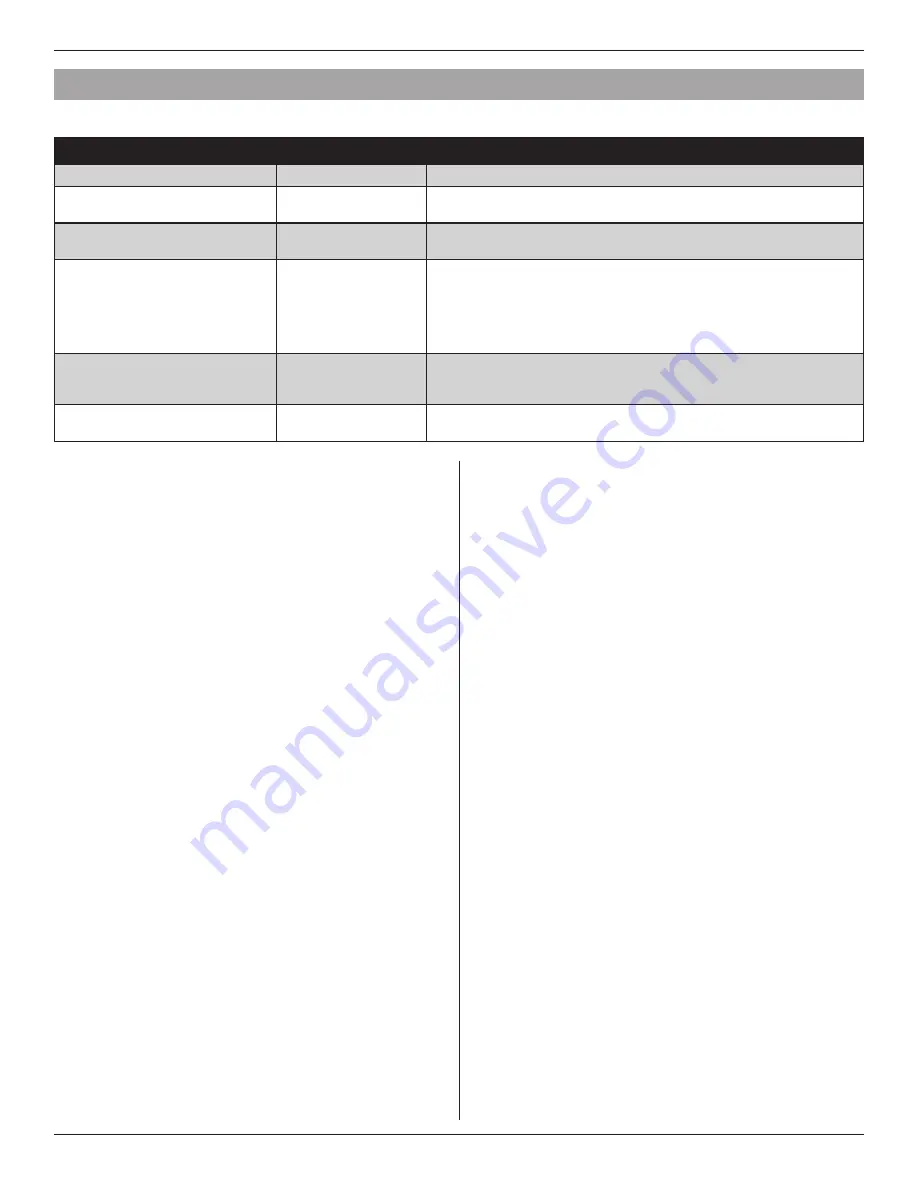
Installation Guide
page 32
18-HD72D1-1
8. Diagnostic Tools
8.1 Test Modes
.
MODE
SETTINGS
DESCRIPTION
Test Blower
50%, 100%
Energize indoor blower at the selected speed
Test Cool
Stage 1
Stage 2
Energize the selected stage of cooling operation. The indoor blower will also
operate at the speed required for the selected stage
Test Compressor Heat
Stage 1
Stage 2
Energize the selected stage of compressor heating operation. The indoor blower
will also operate at the speed required for the selected stage
Test Indoor Heat
Stage 1
Stage 2
Stage 3
Modulating
Energize the selected stage of indoor heating operation. The blower operation
will be dependent on the indoor heat type:
Electric - blower energized during test mode but the blower speed is controlled
by the indoor unit
Fossil - blower is controlled independently by the indoor unit during test mode
Hydronic - blower is energized during test mode
Test Compressor and Indoor Heat
Stage 1 Indoor Heat
Stage 2 Indoor Heat
Stage 3 Indoor Heat
Energize all stages of compressor heat and selected stage of indoor electric
heat/hydronic heat. The blower is energized and runs at the higher of the
compressor heat air flow versus indoor heat air flow
More
Test Humidifier
Test Aux Contact
Closes the normally open Humidifier/AUX contacts. The blower is not energized
during this test mode
8.2 Data Logging
The 824 Control has the ability to log data on USB
Flash Drive. Attach a USB Flash Drive to the Standard-A
receptacle of the included Mirco-A to Standard-A adapter
and plug the Micro-A end into the Micro-USB plug on the
824 Control and select Save Logs from the Service Menu.
The amount of data logged will be dependent on the
number of days logged and the storage capability of the
USB Flash Drive.
HOW TO END???
8.3 Diagnostics
Within the Diagnostic screen are two items related to alerts:
•
Current Alerts – Alerts which are currently active
•
Alert History – Alerts which have been cleared (last
30 days)
NOTE: Each alert will have a date/timestamp of when the
alert was negated.
From both screens the user can select an alert code and
get additional information on the alert as well as a list of
possible causes, similar to the Interactive Troubleshooting
Guide located on ComfortSite/ASDealernet
All alerts are categorized by severity:
•
CRITICAL
— Loss of heating/cooling operation
— Service call is required
— Alert messages are displayed on the home screen
and when closed, a flashing red icon is used to
indicate alert condition.
•
MAJOR
— Reduced functionality but basic/minimum operation is
possible
— Service call is not immediately required
— Alert messages are not displayed on the home screen
but a yellow icon is used to indicate alert condition.
NOTE: Critical and Major alerts can be displayed on the
home screen by pressing the alert icon on the shortcut
toolbar (top right of home screen).
•
NORMAL
— Functionality may be lost but should recover
or information used for diagnostic purposes /
performance monitoring
— Service call is not required
— Normal alerts are only displayed in the Diagnostic
screen
8.4 History
The History screen allows the technician to view cycle count
and run time data for each mode and stage of operation.
This data provides a snap-shot in to how the system is
operating. The technician can also compare the current
month versus the previous month.





















